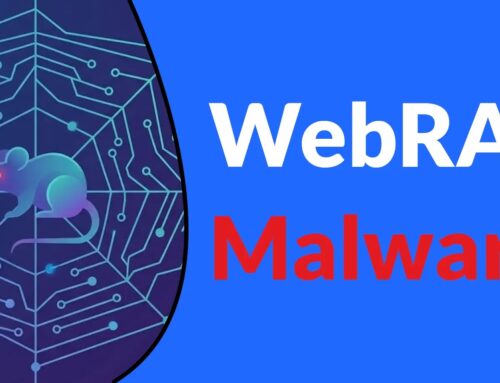
New Slopsquatting Attack Leverage Coding Agents Workflows to Deliver Malware
# Understanding Slopsquatting Attacks: A Threat to Coding Agents
## Outline
1. **Introduction to Slopsquatting**
– Definition of Slopsquatting
– Rise in Slopsquatting Attacks in Cybersecurity
2. **How Slopsquatting Attacks Work**
– Mechanism Behind Slopsquatting
– Common Targets for Slopsquatting
3. **Dangers of Slopsquatting**
– Risk Factors for Coding Agents
– Threats Posed to Development Environments
4. **Preventive Measures Against Slopsquatting**
– Best Practices for Secure Coding
– Recommended Tools and Resources
5. **Conclusion and Key Takeaways**
– Summary of the Importance of Awareness
– Final Thoughts on Mitigating Slopsquatting Risks
—
## Introduction to Slopsquatting
In the rapidly evolving landscape of cybersecurity, **slopsquatting** has emerged as a significant threat, particularly for coding agents and developers. But what exactly is slopsquatting? At its core, slopsquatting refers to the practice of registering domains or package names that closely resemble legitimate software libraries but contain slight typographical errors or deviations. This clever form of social engineering exploits the tendency of users to overlook small details, leading to dire consequences.
### Rise in Slopsquatting Attacks in Cybersecurity
In recent years, the volume of slopsquatting attacks has surged as cybercriminals identify more vulnerabilities within the development community. With an increasing number of developers relying on third-party libraries, the risk associated with slopsquatting becomes amplified, making it a pressing concern that demands attention.
## How Slopsquatting Attacks Work
### Mechanism Behind Slopsquatting
Slopsquatting attacks typically involve malicious actors creating packages or domains that closely mimic popular coding resources. For instance, if a well-known JavaScript library is named `lodash`, a slopsquatter might create a package named `l0dash` or `lodashh`. Unsuspecting developers searching for the library may inadvertently download these counterfeit versions, leading to the introduction of malicious code into their environments.
### Common Targets for Slopsquatting
Popular programming languages and widely-used libraries tend to be prime targets for slopsquatters. Languages like JavaScript, Python, and Ruby, which boast large ecosystems and numerous dependencies, make them especially vulnerable. Developers need to be vigilant, as even minor variations in names can lead to significant risks.
## Dangers of Slopsquatting
### Risk Factors for Coding Agents
For coding agents and developers, the consequences of falling for slopsquatting attacks can be severe. Infections from malicious code can result in data breaches, theft of sensitive information, or unauthorized access to development environments. Moreover, the reputational damage to a developer or organization can be long-lasting, impacting customer trust.
### Threats Posed to Development Environments
Beyond immediate risks, slopsquatting can undermine the integrity of development environments. As malicious packages spread, they can compromise project stability, lead to compliance violations, and even disrupt the software supply chain, making slopsquatting a multifaceted threat that requires proactive management.
## Preventive Measures Against Slopsquatting
### Best Practices for Secure Coding
To counter the growing threat of slopsquatting, developers should adopt proactive strategies including:
1. **Double-Check Package Names**: Before installation, verify the package name against official library listings.
2. **Use Package Lock Files**: Implement lock files to ensure that the specific versions of dependencies are maintained.
3. **Stay Updated**: Always use the latest versions of libraries, as updates often include security patches and fixes.
4. **Audit Dependencies Regularly**: Conduct regular audits of dependencies to identify any unauthorized changes or additions.
### Recommended Tools and Resources
Several tools can help developers minimize risks associated with slopsquatting, including:
– **Dependency Scanners**: Tools like OWASP Dependency-Check can identify known vulnerabilities in used libraries.
– **Package Managers**: Leveraging trusted package managers (e.g., npm for JavaScript) helps ensure only verified packages are downloaded.
## Conclusion and Key Takeaways
In conclusion, slopsquatting represents a growing threat in the cybersecurity landscape, particularly affecting coding agents and developers. The ease with which attackers can exploit typographical errors presents ongoing challenges, making it essential for those in the industry to remain informed and vigilant.
### Summary of the Importance of Awareness
Awareness of slopsquatting and its implications is crucial for maintaining secure coding practices. By adopting best practices and utilizing preventive tools, developers can significantly mitigate risks associated with these attacks.
### Final Thoughts on Mitigating Slopsquatting Risks
As the cyber threat landscape evolves, so too must our defensive strategies. Engaging in continuous education, remaining updated on cybersecurity trends, and fostering a culture of security within development teams will be vital in combating slopsquatting and protecting sensitive information.
By staying informed and vigilant, coding agents can help safeguard their environments against the ever-present threat of slopsquatting, ensuring the integrity and safety of their projects.





